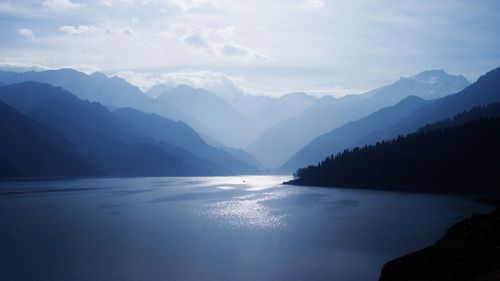Nepal, with its rich cultural heritage, is a land steeped in tradition and ancestral customs. Every aspect of Nepali life has a unique flavor that is shaped by ancient beliefs, customs, and practices. The majestic Himalayas and stunning natural landscapes only add to the already fascinating and intricate traditions that inhabit this country. In this article, we’ll be uncovering some of the most fascinating cultural traditions of Nepal.
Festivals
Nepal is renowned for its plethora of festivals that span the year-round. There’s Dashain, the biggest and most popular festival, where people gather to honor the victory of good over evil. Here, people worship different avatars of the Hindu goddess Durga, symbolizing the victory of good over evil. Also, there’s Tihar, also known as the ‘festival of lights,’ which is dedicated to the goddess of wealth, Laxmi. This festival sees rows of lit-up oil lamps and firecrackers everywhere, decking the streets in celebration.
Weddings
Nepali weddings are lavish occasions that involve intricate rituals and customs. The ceremonies of weddings are culturally diverse and involve the participation of not only the bride and groom but also the families and extended relatives. One of the more interesting customs is the tradition of Guffo Bhetna, where the groom’s family visits the bride’s house and presents a bag of seeds, symbolizing the family’s intention to sow a new seed and form a new relationship with the bride’s family.
Cuisine
Nepali cuisine is an interesting blend of Indian and Tibetan influences. The country’s most popular dish is Dal Bhat, a hearty meal consisting of boiled rice, lentil soup, and curry. Dumplings (momos) are another delicious Nepali staple and can be found in street stalls all over the country. Additionally, Newari food is also widely known and loved for its symbolic significance. For example, during the Newari festival of Tyohlaa, special dishes such as Kwati and Kachila served, symbolizing the promise of good health in the coming year.
Architecture
Nepali architecture reflects the country’s cultural and religious diversity. Newa architecture, the most prevalent style in Nepal, showcases exquisite wood carvings and elaborate brickwork. The most famous example is perhaps the Bhaktapur Durbar Square, which features intricate lattice windows and a profusion of ancient sculptures. The temples and iconic sites in Nepal feature dazzling colors and delicate designs that epitomize the country’s rich cultural heritage.
Conclusion
In conclusion, the cultural traditions of Nepal are unique and fascinating. They bear the marks of a rich and diverse history and are still very much alive in the country today. From the vibrant festivals to the stunning architecture and cuisine, Nepal presents an endless array of captivating traditions that are sure to enthrall visitors. As you set out to explore this cultural gem, remember to partake in the food, witness the festivals and admire the architecture for an unforgettable experience filled with rich customs and tradition.
(Note: Do you have knowledge or insights to share? Unlock new opportunities and expand your reach by joining our authors team. Click Registration to join us and share your expertise with our readers.)
Speech tips:
Please note that any statements involving politics will not be approved.
